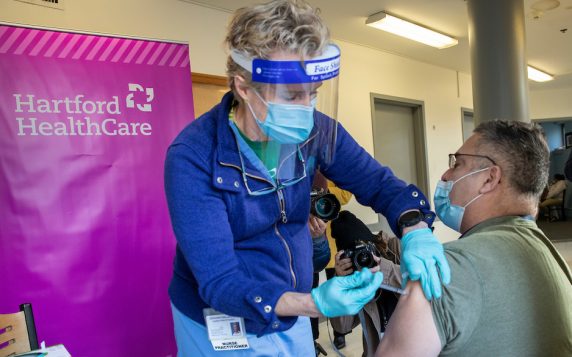Even though more than half of all tested COVID-19 cases in New England are now linked to an Omicron subvariant called BA.2, some epidemiologists are looking elsewhere for a more substantial threat.
“The biggest risk, believe it or not, is kind of around the time of Delta that we saw last (summer),” says Dr. Ulysses Wu, Hartford HealthCare’s System Director of Infection Disease and Chief Epidemiologist. “This is why, even though it’s going to be warmer for us, it’s going to be colder in the Southern Hemisphere. If you have a significant number of unvaccinated patients in the Southern Hemisphere, then you could have the rise of a variant. And that will transmit to us possibly in late summer.”
The BA.2, or “Stealth Omicron” variant, accounts for 35 percent of cases nationally and more than 55.4 percent in New England, according to the latest data provided by the Centers for Disease Control and Prevention. BA.2 accounted for 23 percent of sequenced cases nationally last week and only 11 percent the week before that.
The remaining cases in New England, 44.6 percent, are the Omicron (BA.1) variant.
As mask requirements fade and some states end daily case reporting and reduce funding to test sites, America is starting to view COVID-19 in the rearview mirror. With warmer weather and its built-in outdoor social distancing on the way, it’s looking like a relatively worry-free spring. BA.2, or the original Omicron, should not cause another surge or significant stress on the healthcare system.
“I am not worried about it,” Dr. Ulysses Wu said almost two months ago after the first BA.2 case was reported in Connecticut. “They clinically behave the same and it doesn’t change how we approach the disease. We treat it the same regardless.”
Below: A Nowcast breakdown of COVID-19 variants in New England, designated Region 1 by the CDC. Use the dropdown menu to track variants in other regions:
What, then, about the summer?
“The people who’ve gotten vaccinated but have not gotten boosted, I would strongly suggest getting boosted,” says Dr. Wu. “I’m hoping there are no other variants. And if there is another surge I’m hoping it happens in the fall.”



